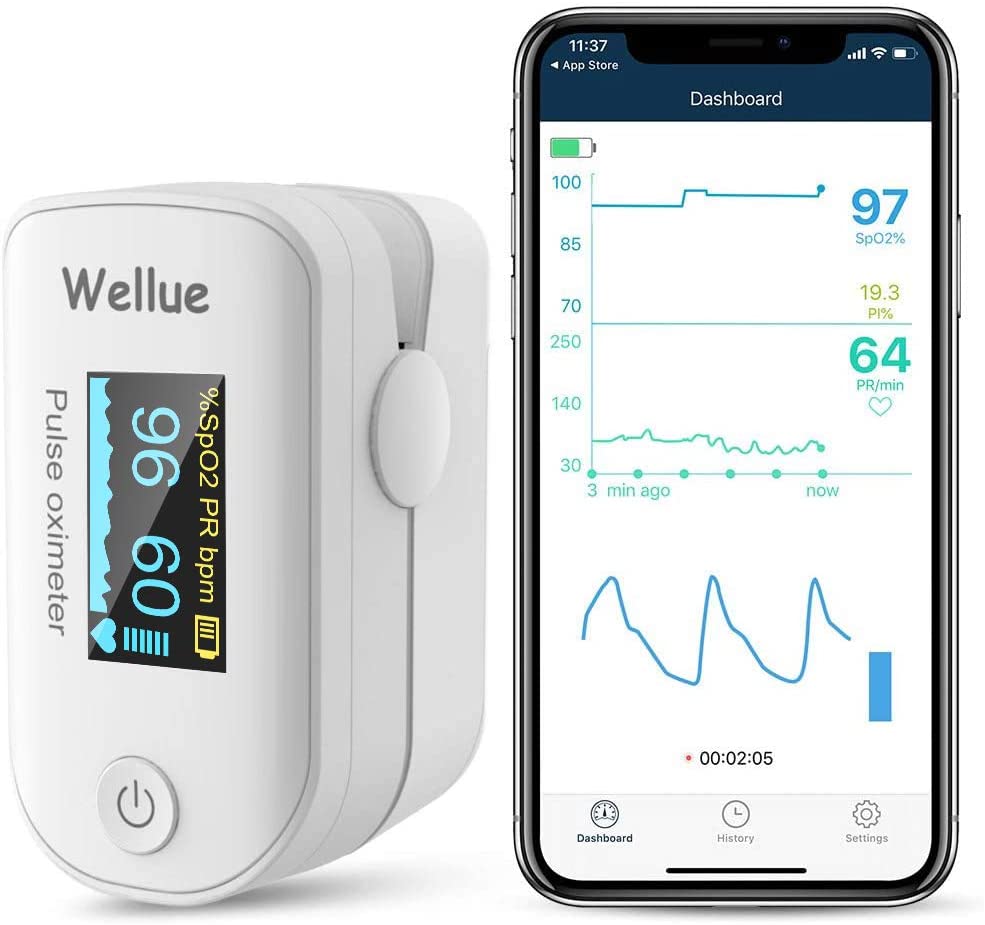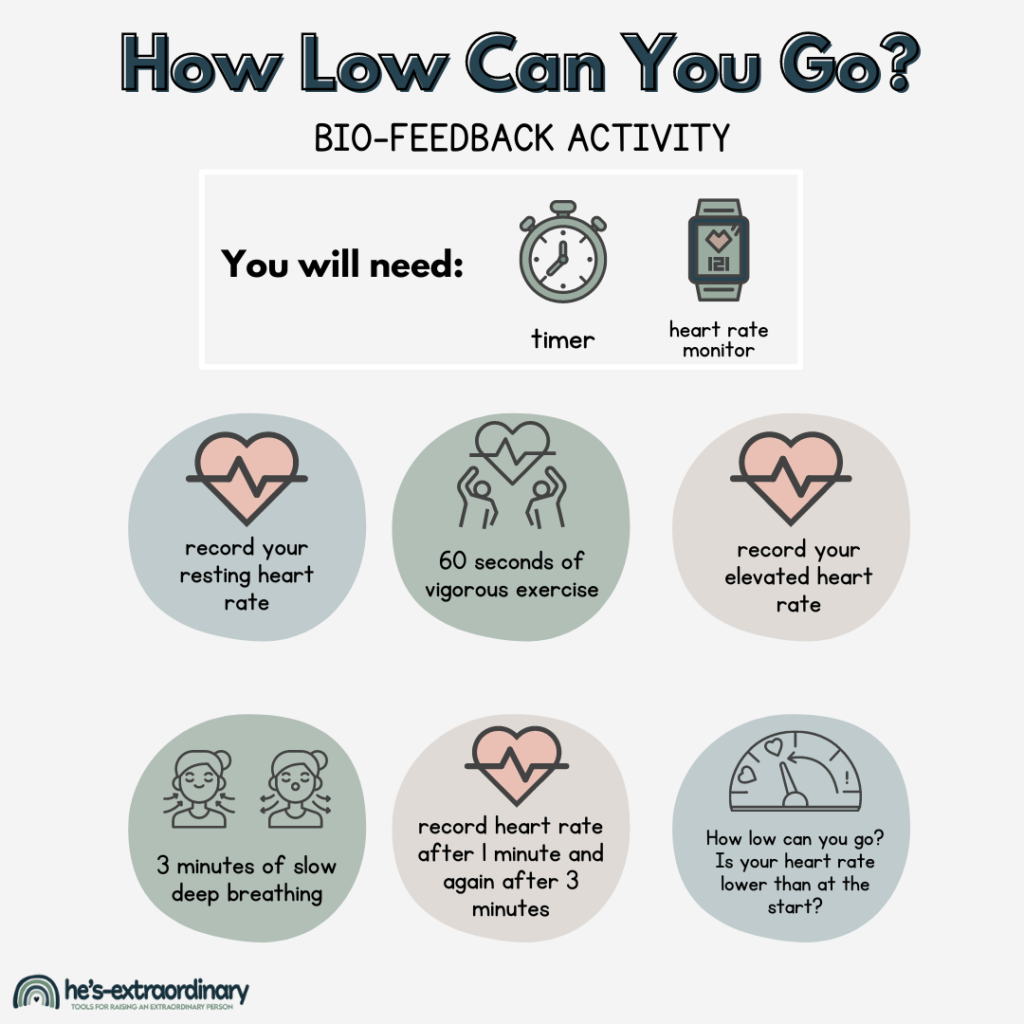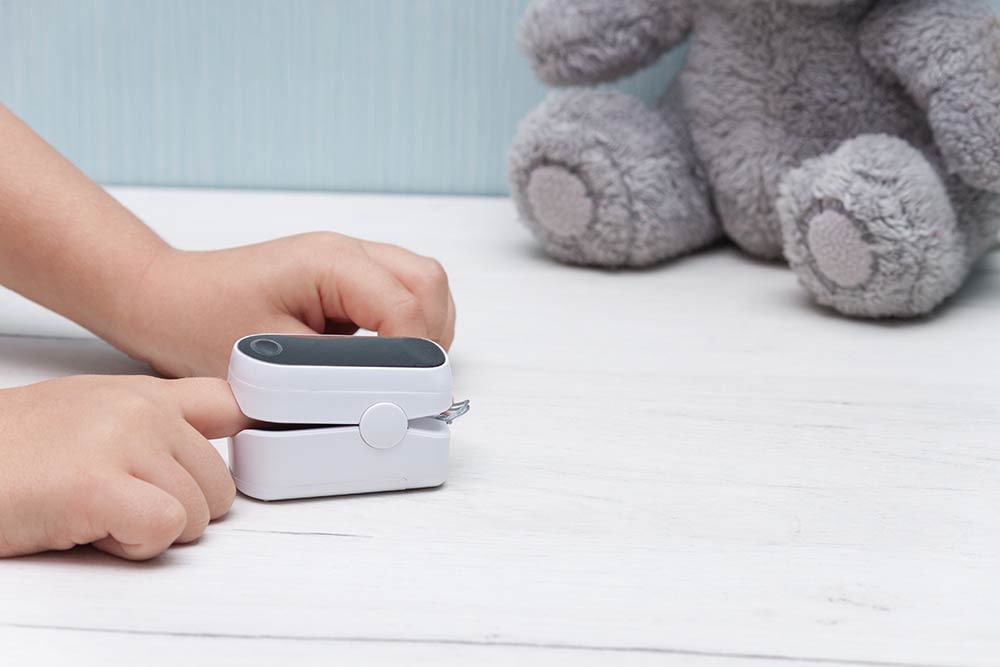Easy Bio-Feedback Activity Helps Regulate Emotions in 5 Minutes
What’s inside this article: Step-by-step instructions for a simple but fun bio-feedback activity that shows children how self-regulating activities help their bodies calm down.
Disclaimer: This post contains affiliate links.
Biofeedback is a therapeutic technique that uses technology to monitor different body functions and provide visual information about how our bodies work.
It’s a great educational tool for children (and adults, too) that brings more awareness to the body and how it changes during different arousal levels and emotional states.
How Low Can You Go
In this activity, called “How Low Can You Go”, children see how deep breathing slows their heart rate, which is important when regulating emotions.
By the way… this activity also makes a great brain break to try in the classroom.
You Will Need:
You don’t need much to play this game, but you should ideally have a pulse oximeter.
A pulse oximeter is a small device that clips onto your fingertip. You’ve probably seen one at the doctor’s office. It measures your blood oxygen level and your pulse, which are very important for this activity.
They’re affordably priced on Amazon, most below $25.

This one pictured actually has an app that graphs heart rate over time, which is useful, but you can also record the numbers yourself, so it’s not necessary.
How to Play Biofeedback Activity
1. Start at a time when your child is calm. Begin by placing the pulse oximeter on your child’s finger and explain to them that it tracks their heart rate. Record their current heart rate.
Note: Kids resting heart rates tend to be higher than adults so don’t be alarmed if your child’s heart rate seems elevated or is higher than your own.
2. 60 seconds of vigorous exercise. Next, set a timer or watch the clock and engage in 60 seconds of intense exercise. The idea is to see how high you can raise your heart rate in those 60 seconds.
Running on the spot, jumping jacks, high knees, or just dancing like crazy are great movement ideas for your minute of exercise. Let your child be silly – and make sure you’re participating, too!
3. Check heart rate again. Immediately after completing the exercise, pop that pulse oximeter back on your child’s finger and record their current heart rate. It should be significantly higher than it was only 60 seconds ago.
4. Practice deep breathing exercises together. Learn the pulse oximeter on your child’s finger the entire time, and take long, slow, deep breaths. Have them watch their heart rate drop as they practice deep breathing, which is a well-known relaxation method.
Since this activity is called “How low can you go?” Challenge your child to see how low their heart rate can drop. Can they make it lower than it was in the beginning? Record your final results.

Explaining Why This Helps Self-Regulation
Explain to your child that just like when you exercise, your heart rate increases when you’re angry, too.
But deep breathing helps us lower our heart rates back down, which helps our bodies feel calm.
Acknowledge that when you are mad, it can be really annoying to hear someone tell you to take a deep breath. You might think it’s pointless or dumb, but this shows us that it really does lower your heart rate.
Try It With Other Self-Regulation Strategies
Deep breathing exercises are a great starting point because they help lower your heart rate universally, but you and your child can experiment with other self-regulation strategies, too, and see which ones have the greatest effects on the body.
Try activities like:
- Guided mindfulness meditations
- Muscle relaxation
- Watching a calming visual, like a glitter jar
- Stretching or a slow yoga sequence
- Laying flat on the floor and doing belly breathing
Research into biofeedback shows that it helps people understand and control their bodily functions—a necessary skill for self-regulation.
Research also suggests that simply participating in biofeedback activities relieves stress and anxiety symptoms, which is important in itself.
Therapists successfully use biofeedback activities like this one to help manage hyperactivity in children, anxiety, phobias, depression, insomnia, and more.
This activity is also guaranteed to be a fun learning experience for your child.


